
We are thrilled to introduce configurable data catalogs, a powerful enhancement that gives ArcGIS Hub users and content curators more control over how you share open data, organize, and showcase content in Hub.
If you were familiar with the content library on sites created in Hub’s classic edit mode, think of this as an upgrade—the new Hub catalog gives you more control over how your spatial data and content is organized and discovered.
Configurable catalogs offer advanced customization of:
You can create tailored collections for specific stakeholders, audiences, and your community to find content that matters most.
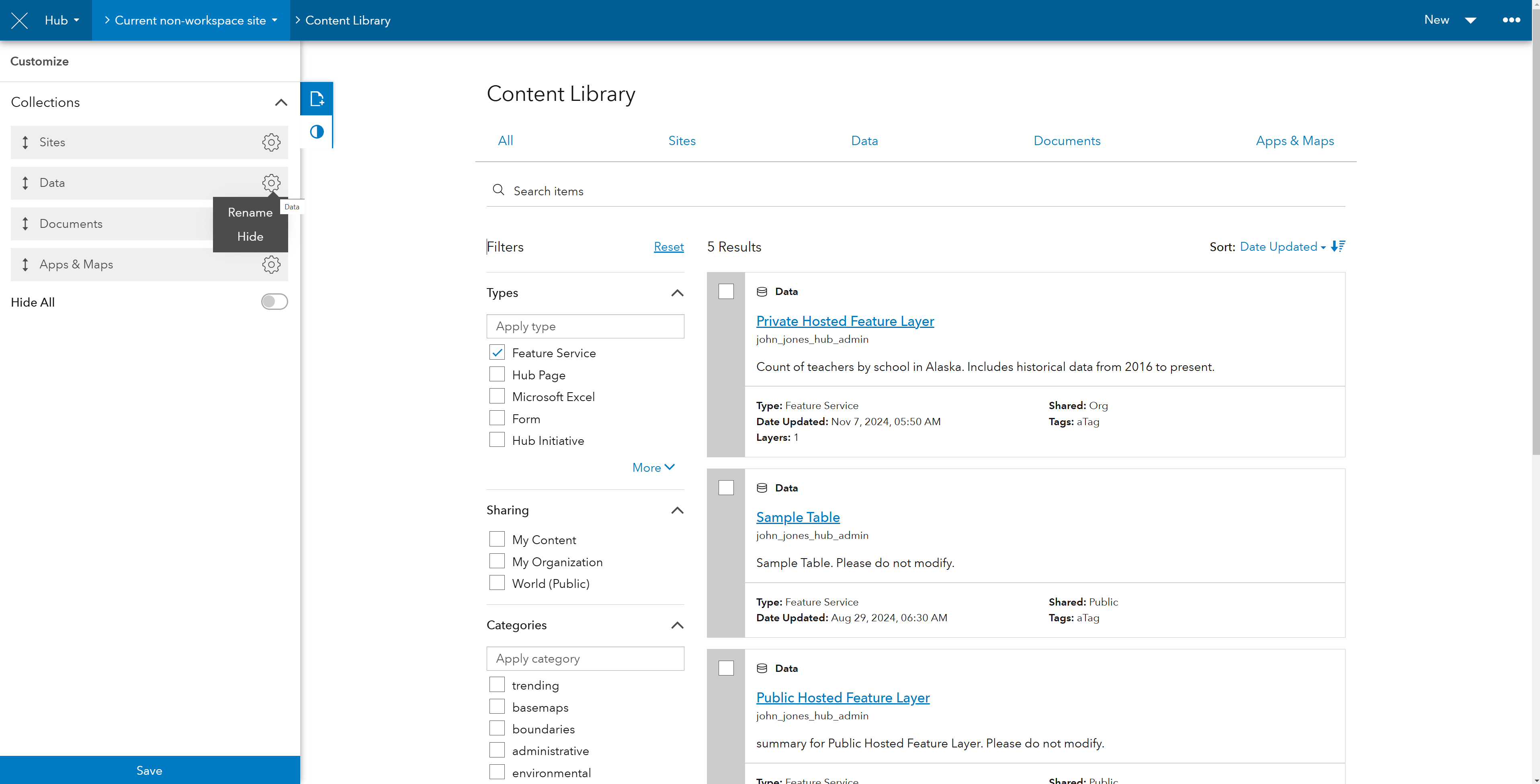
What is a Hub catalog?
Hub catalogs help you organize and share trusted content in a way that makes it easy for people to discover, explore, and use. While the classic content library has limited customization options—the new configurable Hub catalogs provide greater flexibility and ease of customization for data sharing.
IMPORTANT: Existing sites must upgrade their catalog to unlock this expanded functionality in workspaces. Upgrade your catalog today. Learn more
Key features of configurable catalogs
1. Configure catalog content
Like the classic content library, Hub catalogs are configured in workspaces by adding one or more groups. As needed, go to the site workspace Content and select Configure catalog, then choose the Select groups button to configure the catalog content.
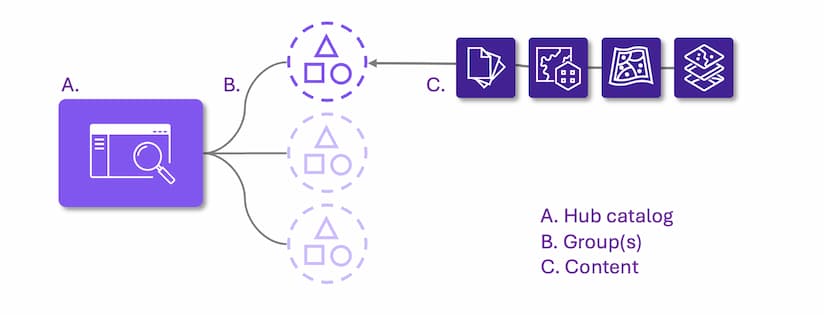
Content shared with groups is indexed by your catalog. The items’ share settings are respected, which supports GIS data management and content governance. This gives you control to create public open data catalogs, secure private catalogs, or mixed-privacy catalogs. Refer to Set sharing and access for more detail.
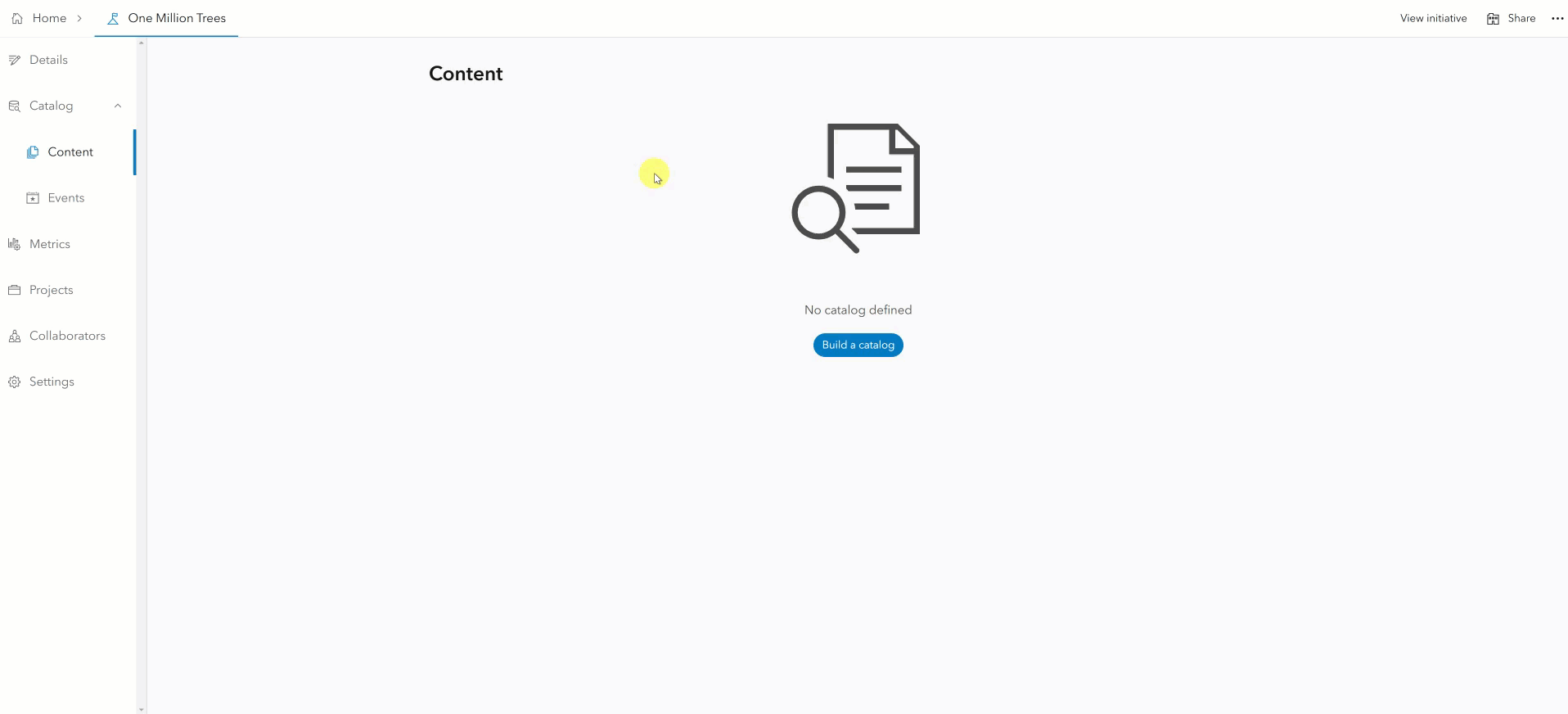
2. Configure catalog collections
Unlike catalog searches which dynamically filter all available content, collections let you create custom groupings within the catalog. These groupings serve as an additional way to organize content based on theme, purpose, or topics you define. Hub’s default collections organize content by documents, data, maps & apps, and sites. Site managers can show or hide, rename, and reposition the order of these default collections.
Configurable collections now offer even more control to expand these groupings. Hub Premium users can configure up to ten collections per catalog using advanced filters. This makes it easier and faster for users to find specific resources based on their objectives.
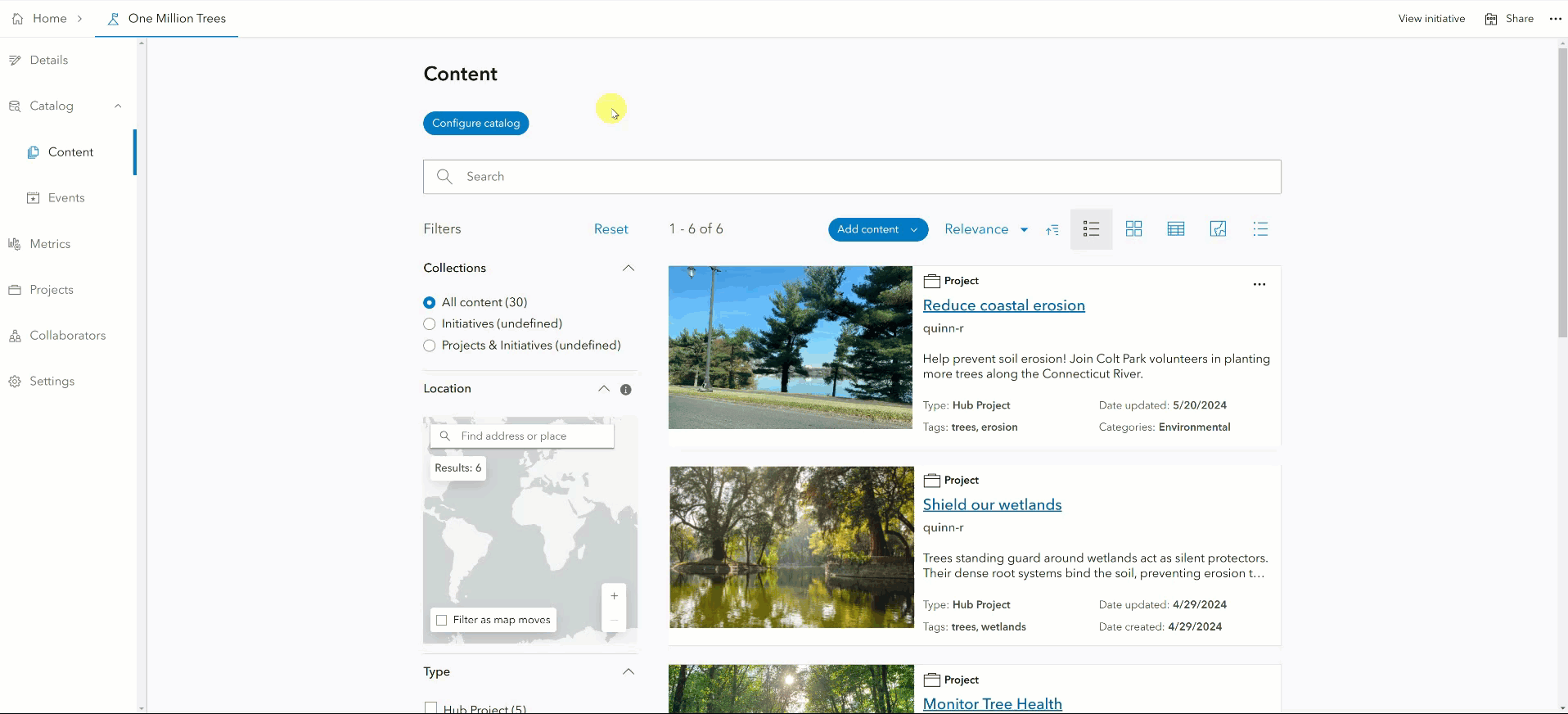
3. Configure catalog search appearance – ArcGIS Hub roadmap¹
If looks are your thing, we have your back. Next on the roadmap, Hub Premium users will have more control over how your catalog appears to visitors, including the ability to configure:
- Default layout (grid, list, table, map, compact)
- Default sort order
- Default card appearance
- Default search facets
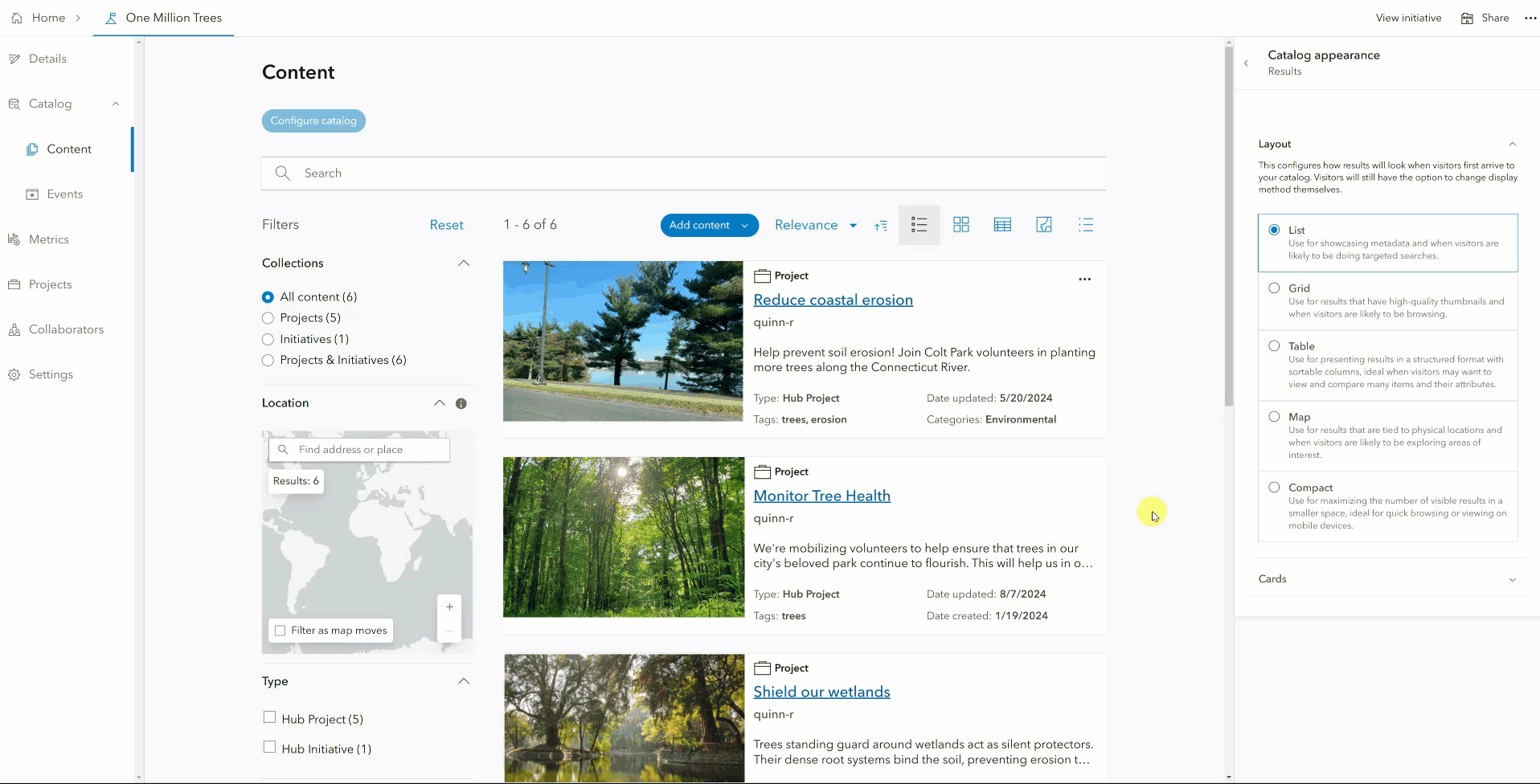
4. Bonus: WYSIWYG editing for catalog configuration
As you may have noticed in the above illustrations, a major bonus with the configurable catalogs is the introduction of a What You See Is What You Get (WYSIWYG) editing experience.
This means you can:
- Configure your catalog on the fly.
- Visualize how content, collections, and appearance settings will display before saving.
- Eliminate guesswork, making customization easier and more intuitive.
ArcGIS Hub data catalog features and benefits
Configurable catalogs in ArcGIS Hub is a powerful way to organize your content, providing:
- Greater control: Decide exactly what content appears in your catalog by using groups.
- Better organization: Easily organize collections by grouping similar content or events together, so users can navigate more quickly to what matters most.
- Real-time customization: Adjust catalog appearance with an instant preview.
- Future-proof design: Built for scale, your new Hub catalog will integrate with more search attributes that will allow greater customization.
Availability
- Configurable catalogs are now available using workspaces, the default Hub management experience. Existing sites must upgrade their catalog to leverage this expanded functionality. Learn more
- Hub Premium users can also configure focused catalogs for events, projects, discussion boards, and initiatives.
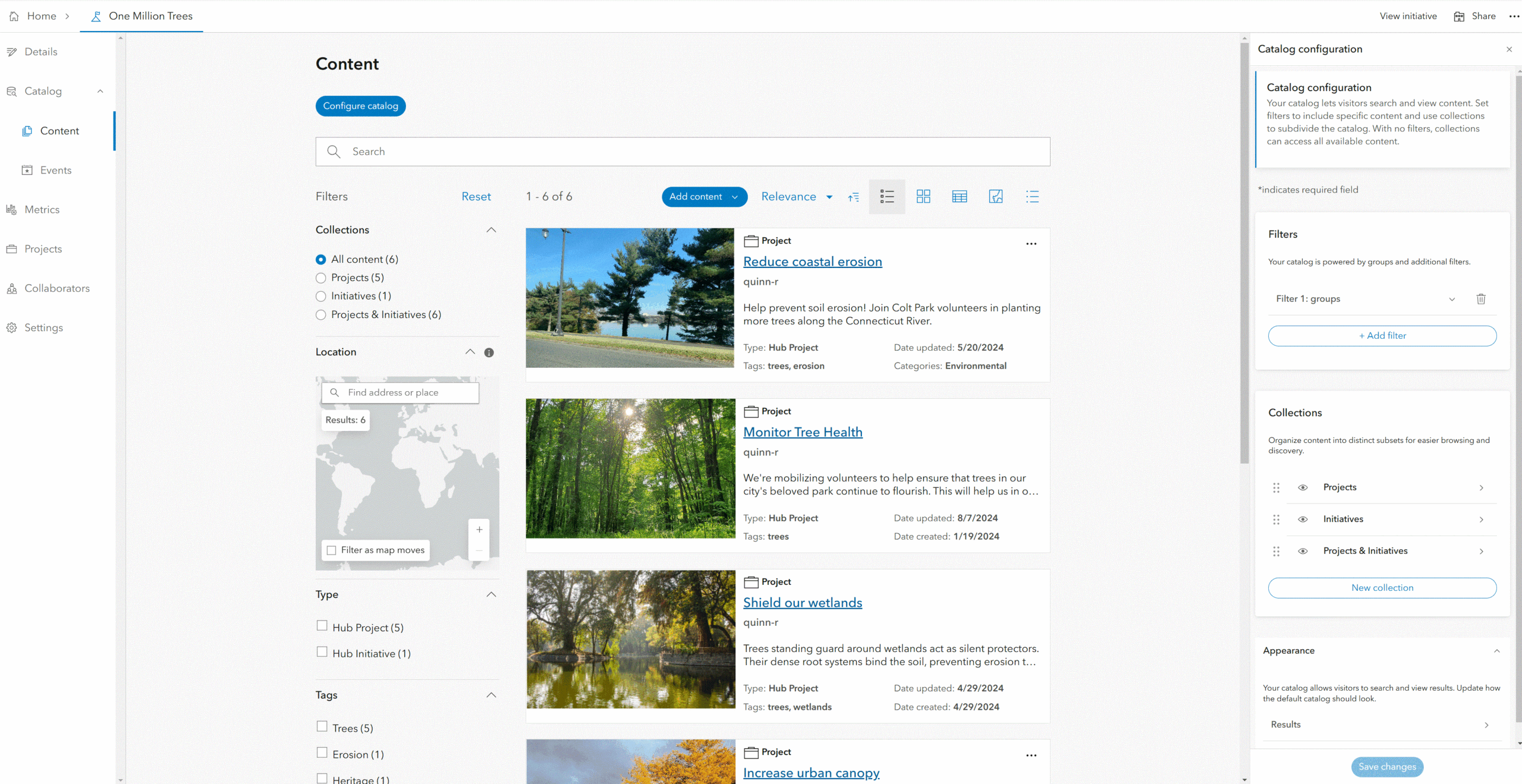
What’s next?
Configurable catalogs continue to evolve. Keep an eye on this article for more details, including demos, pro tips, and updates.
Additional resources
- Find out what’s new and learn best practices on the ArcGIS Blog
- Visit the ArcGIS Hub Esri Community
- Attend Hub webinars
- View presentations, demos, and how-to videos on our ArcGIS Hub playlists
- Sign up for the ArcGIS Hub e-newsletter
- Follow us on X @ArcGISHub
- Visit the ArcGIS Hub Gallery to explore examples from the community
¹ Roadmap items are subject to change.
This article was first published on May 29, 2025, and has been updated to reflect expanded configurability available with upgraded Hub catalogs.




Commenting is not enabled for this article.